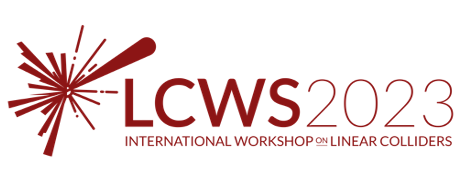Speaker
Description
During the ILC Global Design Effort (2007) two 200 kV high voltage photoguns based on an inverted insulator geometry were developed in 2010 and successfully tested at Jefferson Lab (JLab). One of the photoguns has been operated at 130 kV in the CEBAF accelerator for the JLab nuclear physics program. The inverted insulator replaces the electrode support structure, consequently significantly less metal prone to field emission is biased and surfaces contributing to the vacuum load are significantly reduced. Implementing a biased anode, and using a larger laser spot size has made this the state of the art polarized beam source with ~200 C charge lifetime from SSL GaAs photocathodes. However, operating at the design 200 kV voltage has been hindered by field emission at ~190 kV. To reliably operate without field emission requires lengthy conditioning applying 50-100 kV beyond the voltage needed for beam operations, without breakdown or damage to the insulator. Over the past decade, JLab has developed two photoguns with a larger version of the commercial inverted insulators used in the ILC design. One photogun operated at 300 kV for magnetized beam studies, and the concept has been implemented in the BNL polarized photogun. The second photogun has recently been installed in CEBAF to operate at 200 kV field emission free. Higher voltage photoguns help the ILC and CLIC achieve higher bunch charge (2013 TDR), and additionally provide margin for operating with shorter laser pulse length and/or smaller laser spot size (better emittance at higher peak current). Such photogun designs need to reach ~400 kV without breakdown or insulator damage to operate field emission free at > 300 kV. This also allows for direct injection into a SRF booster. JLab submitted a proposal to HEP for developing in partnership with industry an inverted geometry insulator to fit commercial 400 kV cables. This contribution describes JLab experience developing and testing high voltage photoguns, and what is needed to sufficiently condition for voltage levels higher than beam operational voltage.
This work is supported by the U.S. Department of Energy, Office of Science, Office of Nuclear Physics under contract DE-AC05-06OR23177, and Office of Science Funding Opportunity LAB 20-2310 with award PAMS-254442.



